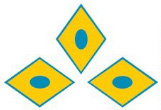Letters of Credit
Trade Finance/Letter of Credit (LC)/Documentary Credit (DC)/DAP/DAA/Collection
Trade can be defined as an action carried out between a buyer and a seller for the exchange of goods or services with money or any other goods or services.
INTERNATIONAL TRADE
International trade is defined as trade between two or more parties from different countries (an exporter and an importer).
Methods of Trade Settlement
- Payment in advance
- Open account
- Collection
- Letter of Credit
Types of LC
- Irrevocable Letter of Credit
- Sight Letter of Credit
- Acceptance or Time Letter of Credit (Usance)
- Deferred Payment Letter of Credit
- Confirmed Letter of Credit
Documents under LC
- Invoice
- Packing List
- Weight List
- Export/Import License
- Certificate of Origin
- Third Party Pre-shipment Inspection Certificate
- Quality Certificate
- Certificate of Analysis
- Health/Veterinary/Phyto-sanitary Certificate
- Bill of Lading
- Airway Bill or Air Consignment Note
- Rail or Road Consignment Note
- Post Parcel Receipt
- Insurance Policy
- Bill of Exchange or Draft
INCOTERMS
For Sea and Inland Waterway Transport:
- FOB - Free On Board: Buyer pays all transportation and insurance costs, once delivered on board the ship by the seller.
- CIF - Cost, Insurance and Freight: Seller arranges and pays cost, freight and insurance to destination port. Adds insurance costs to CFR.
- CFR - Cost and Freight: Seller arranges and pays cost and freight to the named destination port.
For Any Mode or Modes of Transportation:
- EXW - Ex Works: Seller delivers (without loading) the goods at disposal of buyer at seller’s premises.
- FCA - Free Carrier: Seller delivers the goods to the carrier at an agreed place and may be responsible for clearing the goods for export.
- CIP - Carriage and Insurance Paid To: Seller delivers goods to the carrier at an agreed place, but seller pays carriage and insurance to the named place of destination.
- CPT - Carriage Paid To: The seller clears the goods for export, delivers them to the Carrier, and is responsible for paying for carriage to named port of destination.
NRB-Forex guidelines relating to LC
- Charges / Margin can be deducted from applicant’s account only
- Firms other than companies cannot enjoy L/C facility more than 20 times their registered capital
- 10% additional margin must be collected for Reimbursement L/Cs at the time of opening the L/C for trading units
- For Sight L/Cs equal or above $50K, Business Credibility Information (BCI) Report of the Beneficiary with satisfactory credit rating/conduct of account is required. BCI cannot be more than 1 year old. BCI obtained by one bank can be shared with others.
- All import Letters of credit shall compulsorily specify the border customs point through which the goods will be brought into Nepal
- LC’s can be sent/advised to the foreign beneficiaries through correspondent banks only
- LC Issuing Bank can accept shipping documents under LC’s (INR/FCY) received through correspondent banks only
- LC cannot be issued for an individual.
- Payment cannot be made directly to the beneficiary/individual under LC’s (INR/FCY)
- Usance facility for a trading unit cannot be more than 180 days (both in INR and FCY) . For Industry the usance period can be of any number of days depending upon the agreement between the Applicant and Beneficiary. NRB Margin of 3%(for Trading) and 1%(for industry) needs to be obtained while issuing BBN 4/ BBN 4 GA (for INR).
- Import exceeding INR 3 Crores can be done through LC only.
- Extra caution has to be applied for LC opened in India in FCY. Only selected goods can be imported from India in FCY.
